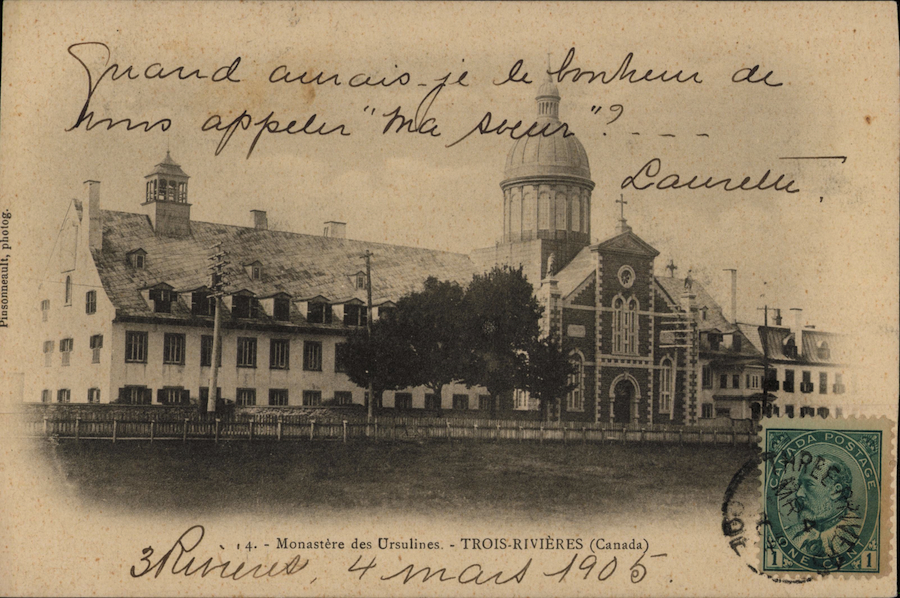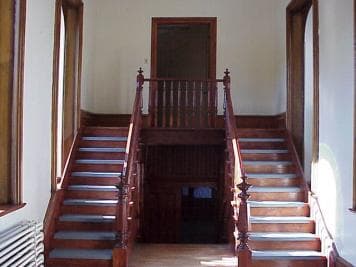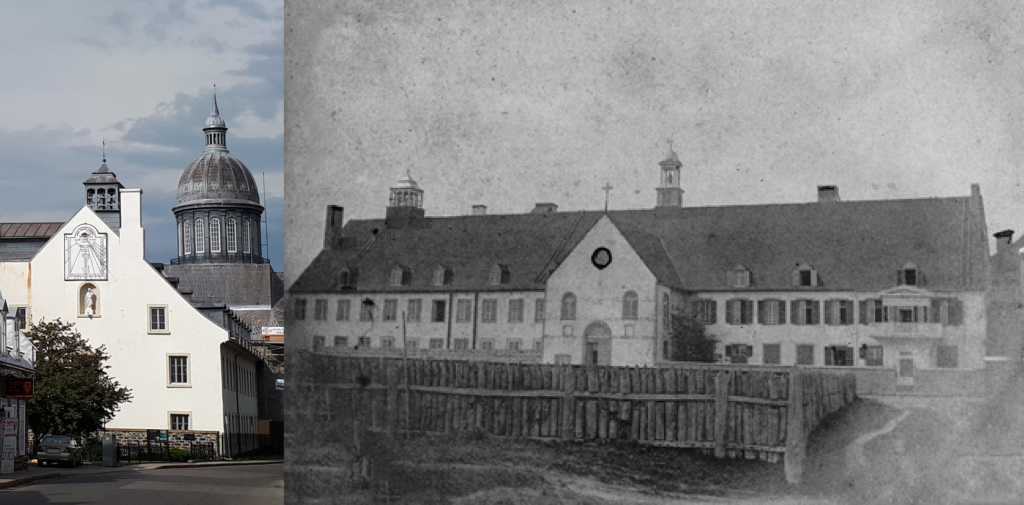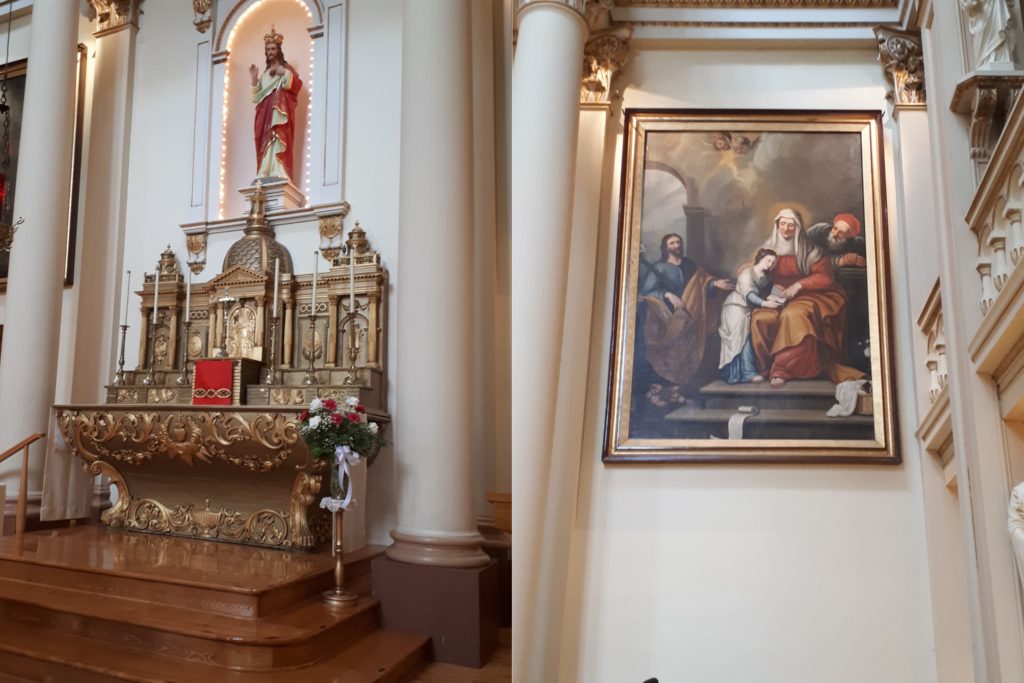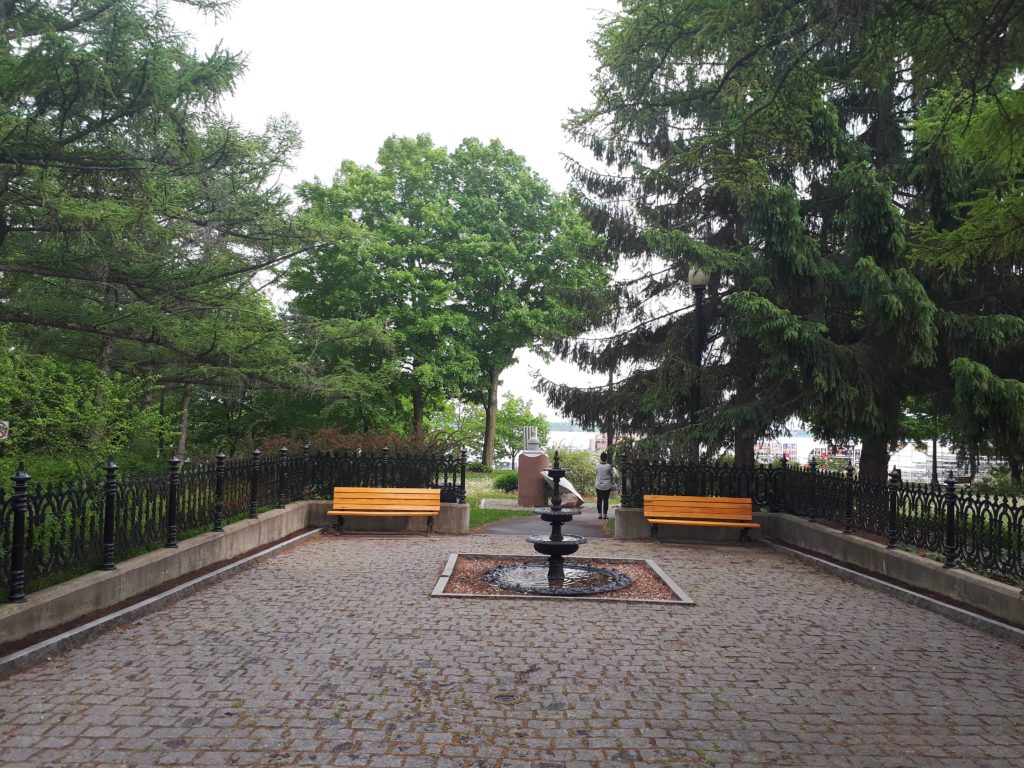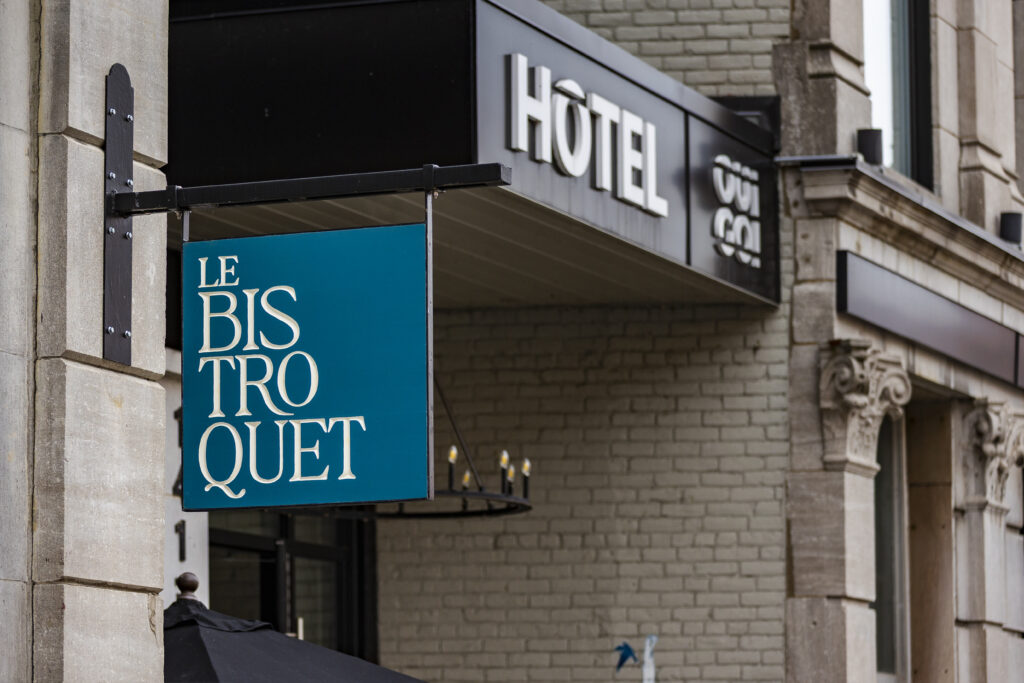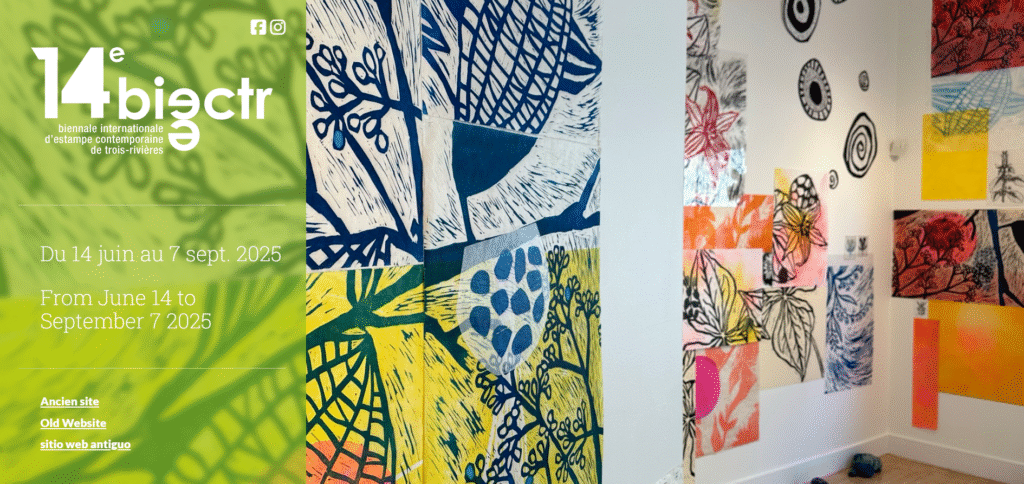Merci à Laurence, responsable de l’animation et de l’éducation au Musée des Ursulines, pour la visite des lieux, agrémentée d’une foule d’informations sur l’histoire de ces femmes qui devaient poursuivre pendant toute leur vie la mission d’enseignantes et de soignantes ici à Trois-Rivières.
La rue des Ursulines, ancien tronçon de la rue Notre-Dame, a été nommée ainsi à l’occasion du 250e des Ursulines en 1947. Situé sur cette rue, le Musée des Ursulines est un lieu posé et calme, à l’image de la communauté religieuse qu’il abrite. Certains des guides, s’occupant également de l’accueil des visiteurs, ont même été élèves au Collège Marie-de-l’Incarnation, école située dans les mêmes installations que le musée. Si vous êtes plus aventureux, il est aussi possible de visiter sans guide la salle d’exposition. Tout ce que nous pouvons y retrouver est bien expliqué à travers les diverses photos, fichiers audio et vidéo comportant des témoignages des sœurs, ainsi que les milliers d’objets qui relatent non seulement un large pan de l’histoire de la communauté, mais aussi l’évolution de la ville de Trois-Rivières et de la région.
À Trois-Rivières, vers la fin du XVIIe siècle, la ville comporte 32 familles, qui réclament des services hospitaliers et une école pour jeunes filles. En 1697, cinq Ursulines de Québec se déplacent donc à Trois-Rivières pour répondre au besoin des familles. Au départ, les Ursulines enseignaient aux Autochtones et aux Françaises. Trois ans après leur arrivée, elles emménagent leur cloître, leur école, et leur hôpital afin de répondre aux différents besoins de la population. Bien qu’il y ait eu jusqu’à 300 religieuses à l’époque, seulement 60 religieuses y habitent aujourd’hui.
Le Collège Marie-de-l’Incarnation, qui fait partie du site patrimonial des Ursulines de Trois-Rivières, a été pour la majorité de son existence une école réservée aux filles. Ce n’est que depuis 2010 que le collège est devenu mixte, acceptant ainsi les garçons également. Celui-ci est fréquenté par plus de 700 élèves du niveau primaire et secondaire. Petite anecdote sur l’escalier ci-dessous, surnommé l’escalier de la réconciliation : lors d’une prise de bec entre deux étudiants, chacun devait emprunter son côté d’escalier et rendu en haut, ceux-ci devaient s’embrasser sur la joue en guise de pardon.
Dès le début des années 1700, l’hôpital Hôtel-Dieu nommé « l’hôpital des pauvres » a été opéré par les sœurs hospitalières soignant les gens malades qui ne pouvaient pas se payer un docteur à domicile. Les religieuses ont ainsi consenti à établir un hôpital de six lits et à pourvoir au soin des malades « les plus nécessiteux ». L’hôpital des Ursulines aura su durer pendant plus de 188 ans avant de devoir fermer ses portes en 1886 par manque de ressources. À noter que ce fût le premier et le seul hôpital public à Trois-Rivières jusqu’à sa fermeture.
En plus de tenir un hôpital, les Ursulines, en 1807, commencent à s’occuper des gens ayant des troubles de santé mentale. Un bâtiment nommé « loge des insensés » est alors bâti en 1808 afin de mieux s’occuper d’eux. La construction adjacente au monastère compte un total de six loges aux fenêtres grillagées et aux portes doubles munies de verrous. Presque quarante ans plus tard, soit en 1845, les Ursulines ne s’occuperont plus de ce type de patients et ceux-ci seront directement relogés à Beauport dans un asile.
La visite de la chapelle, pour ma part, fut un coup de cœur : son majestueux dôme est le symbole même du vieux Trois-Rivières. La chapelle a été construite entre 1713 et 1715, alors que le célèbre dôme a été construit seulement en 1897, lors des derniers travaux d’agrandissement.
Les travaux ont été effectués par les gens de la région, dont les frères Héroux de Yamachiche, artisans trifluviens. À l’intérieur de la chapelle, la fresque du dôme a été peinte par Luigi Capello, peintre italien du XIXe siècle. Celui-ci a été le maître d’artistes d’Ozias Leduc, qui pendant sa carrière a décoré plus de 30 églises et chapelles au Québec. À l’intérieur de la chapelle, on peut voir le mur amovible qui séparait les sœurs cloîtrées du reste des autres personnes présentes pour la messe. Même lorsque le prêtre était seul, le mur était monté. Tous les jours, une messe pour les religieuses qui demeurent encore dans cet établissement s’y déroule. Lors des fins de semaine, le public est invité à la célébration.
En face du Monastère des Ursulines est situé un des deux jardins des Ursulines. Celui-ci ne servait pas aux religieuses, car elles étaient cloîtrées. À la fin des années 1970, le site est utilisé comme jardin communautaire et est ensuite transformé en parc public en 1986. Lors des belles journées d’été, vous pouvez vous y reposer et apprécier la vue du fleuve Saint-Laurent. Dans ce parc, vous pourrez voir la plaque commémorative du tricentenaire de l’arrivée des Ursulines à Trois-Rivières. L’autre jardin est situé à l’arrière du monastère. Celui-ci servait à nourrir la communauté des Ursulines. Elles cultivaient aussi des fleurs qui servaient lors de certaines fêtes religieuses ou grandes occasions.
Une nouveauté attend les visiteurs cette année : une modélisation en 3D des lieux sera disponible à la fin du mois de juin pour mieux comprendre, à l’aide de reconstructions visuelles, à quoi ressemblaient les bâtiments d’antan ainsi que les bâtiments qui ont disparu au fil des ans. Entre autres, le monastère actuel, la cour intérieure du monastère et les bâtiments du Collège Marie-de-l’Incarnation y figureront.
Brigitte Carrier, Agente Expérience client
Hôtel Oui GO !
Musée des Ursulines
734, rue des Ursulines
Trois-Rivières (Québec) G9A 5B5
819 375-7922


